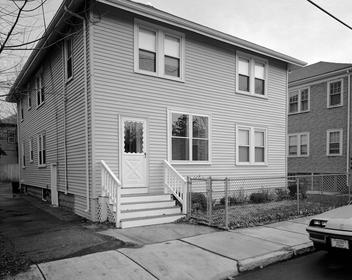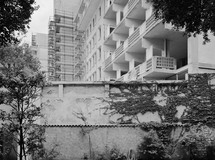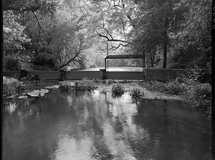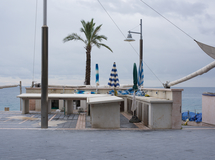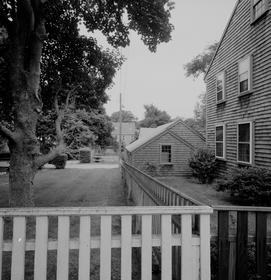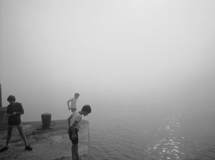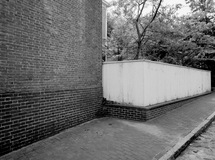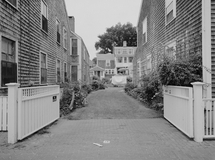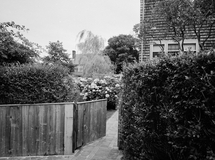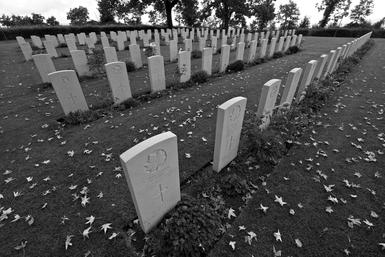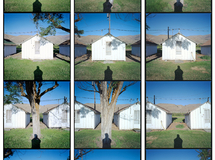In The Show 1,2,3,4, I gave some perspective on photographic prints I was donating to the Martha's Vineyard Museum from a one-man exhibition I'd had on the island in 1995.
In this, the addendum, I'll share with you the handing over of the 21 prints to the Museum.
On a bright, sunny, and very windy day in early October 2020 my daughter Maru and I arrived at the scheduled time, prints in hand, and masks on. As it turns out the Museum is open but restricting the number of visitors.
Photos are by Maru:
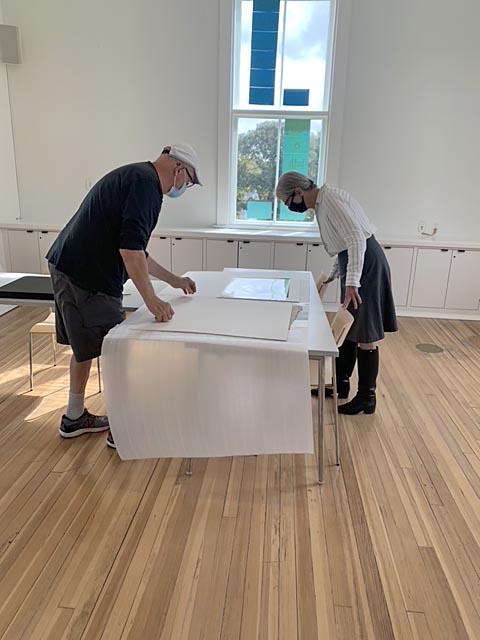
We put the two portfolios out on white tables and went through the prints one by one with Bonnie Stacy, the Museum's curator.
Taking masks off for a second, we held one up I took of Keith's Field in 1993.
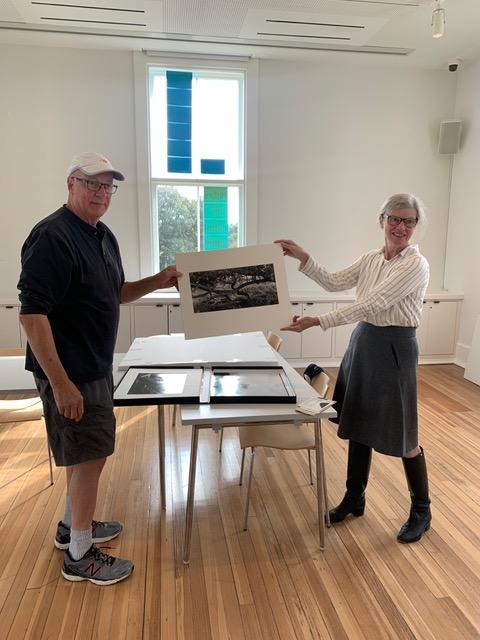
We then went upstairs to the library for me to sign a donor's form.
This gave me a chance to ask some questions of Bonnie: how the prints would be stored, whether they would show them, and so on. She showed us a couple of galleries that would be suitable for my work and said they were considering some ideas about putting them on display.
I then signed the "Deed of Gift "form ceding the prints to the Museum, giving permission to use them in any way they wished, including selling them, but I retain the copyright. This simply means that while they now owned the original prints from the show 25 years ago I retained the rights to use and own the imagery.
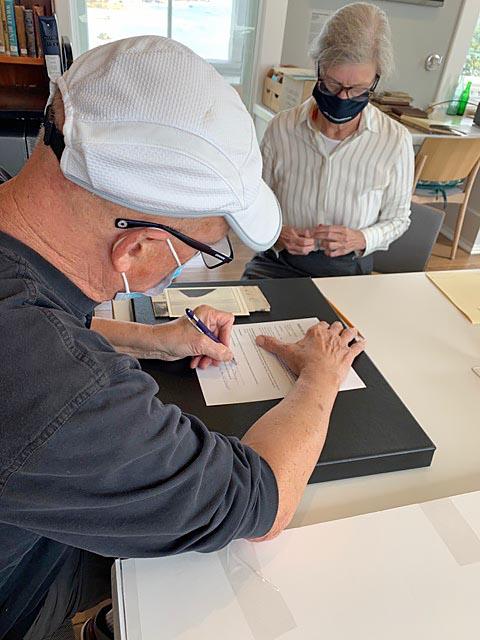
Then we left. Thanks to Maru for her help throughout this project
So that's the end of the story of donating prints I made 25 years ago to a museum on Martha's Vineyard, Massachusetts.
Like the story? Comments? Let me know: Neal's Email
You also can subscribe: sign up on the opening page of the blog.
This post will conclude the series of articles about a show of my photographs at the Martha's Vineyard Museum in August 1995.
I applied for and was granted a sabbatical leave for the fall semester in 1994 and chose to spend it on the island. I rented a place just a few miles from the family home, choosing independence over staying with my mother. It was a good decision. Up early each day, out shooting all day, back as the light died, unloading and loading film holders when it was dark, only to repeat the next day. I was in heaven. One of the lessons I learned that fall was that if your source for making pictures is close by you can get more done.
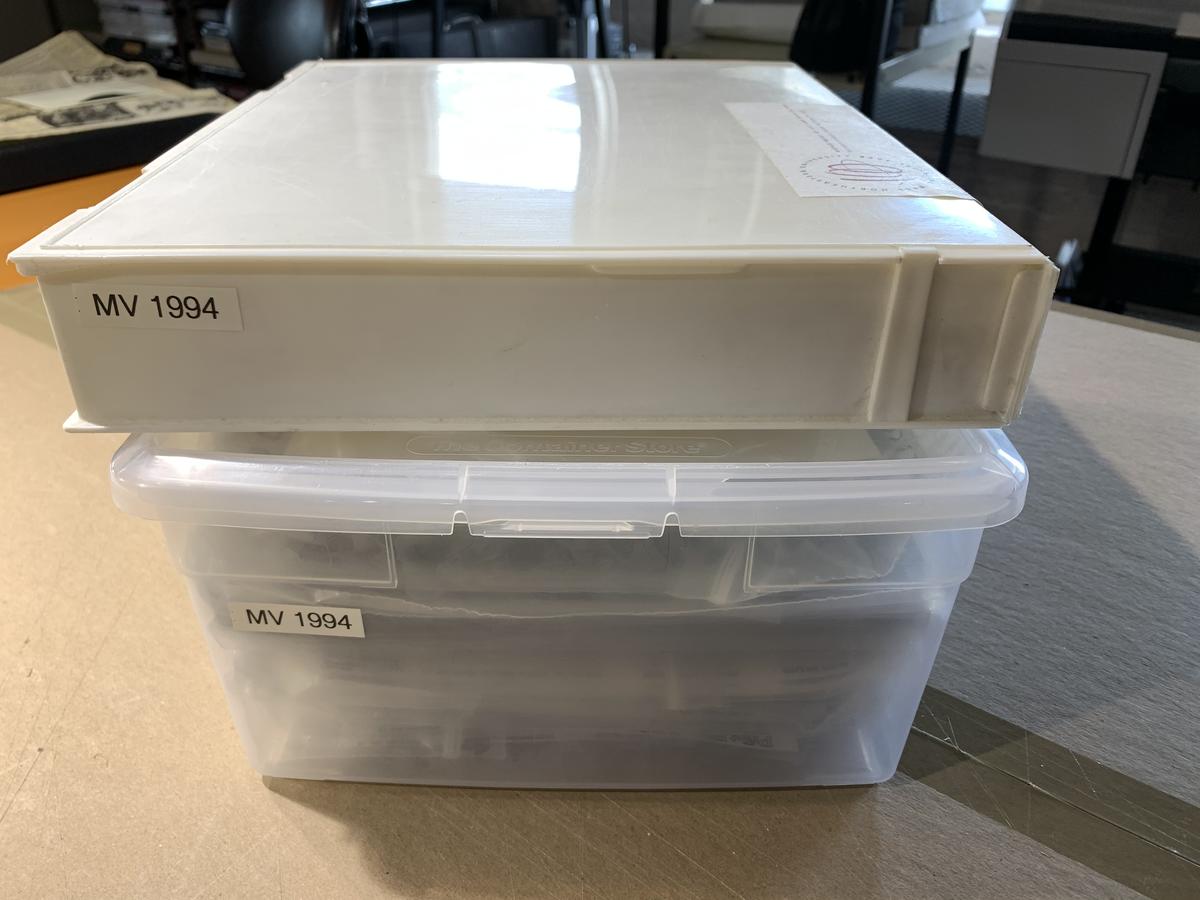
By this time I had finished the VOLF project and was photographing on my own, knowing the show was coming up the next summer. That fall I probably shot 500 or 600 sheets of 8 x 10 film.
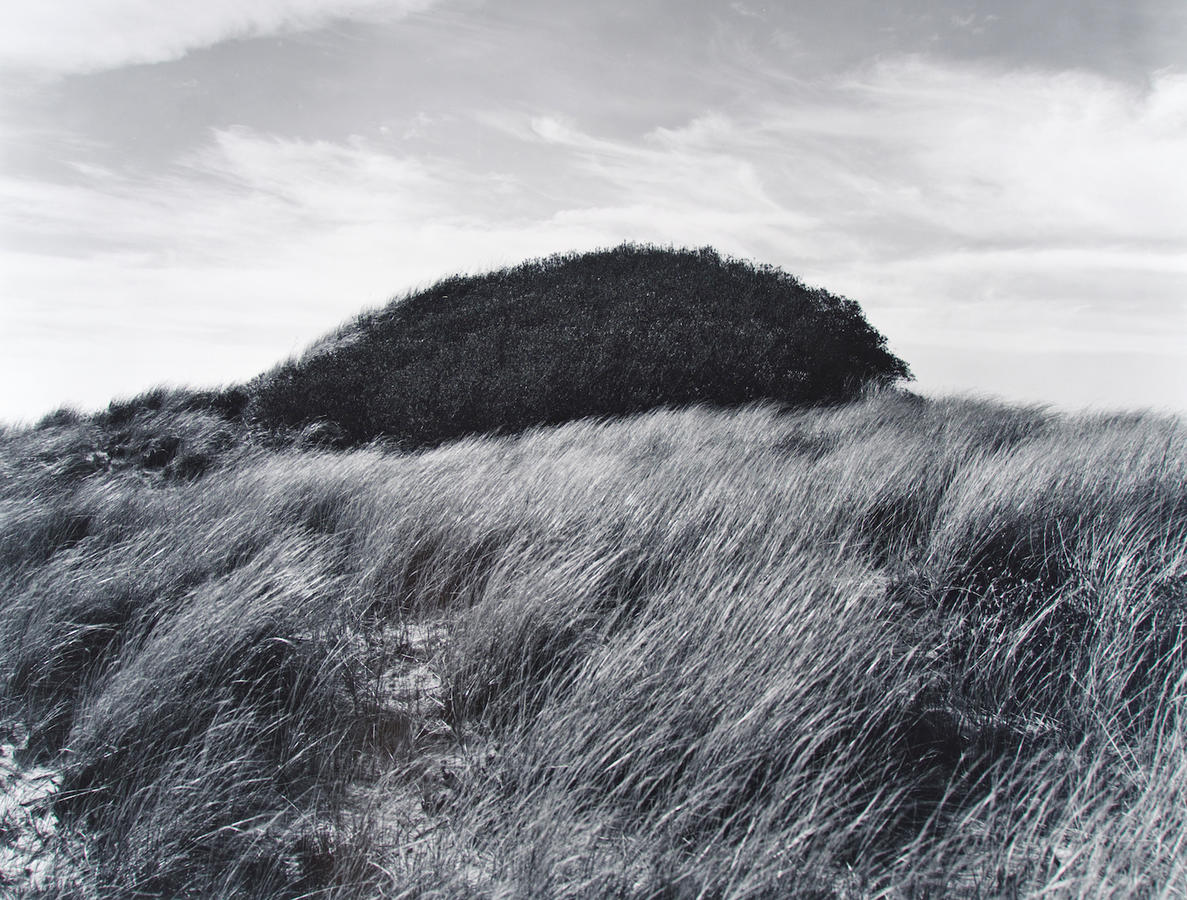
All that work edited down to 21 prints for the show in 1995. No way is that representative of what I did over the years 1988-1994. Just the very tip.
Finally, after the show I worked over the next couple of years to process and print my best images of the island from that period with the intention of getting the work published into a monograph, to no avail. One publisher said that the book was of "regional interest-only" and felt there would be too small a readership for a national press. Another didn't buy the tie-in with Atget's work of Paris in the early twentieth century. It was never clear to me that he'd ever heard of Atget's work.
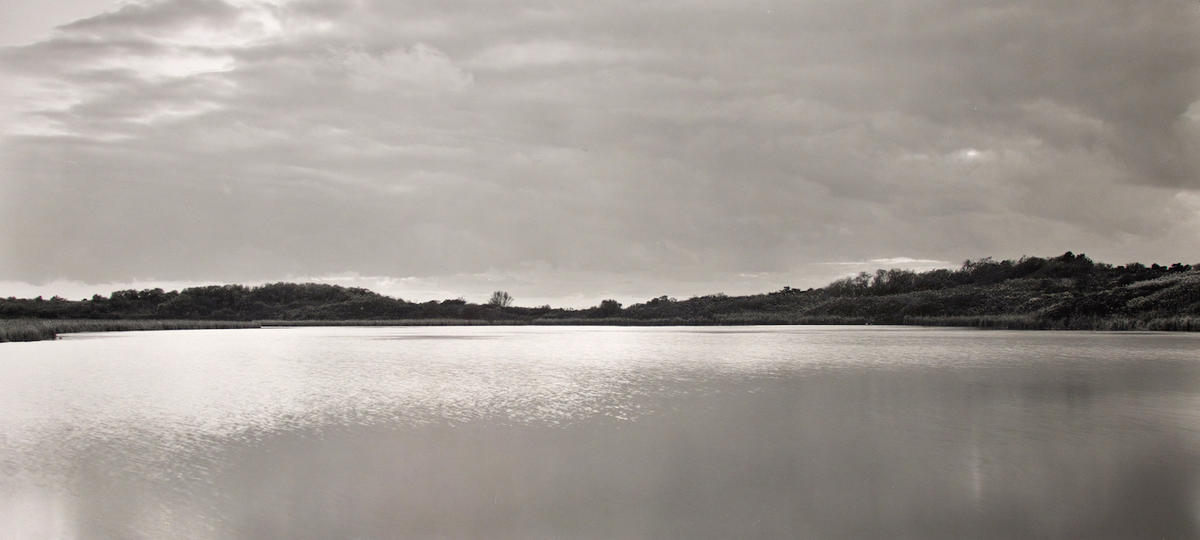
Now the 21 prints from the show will go to the MV Museum for their archive. I have hopes for stewardship that will care for them, that will respect the work and my intention to make photographs that showed the island at a certain time in its history and development. I also hope they will store them well. I will mourn the loss of this work from my collection but, as we age, it is incumbent on us to part with work that can have a life under others' care.
Thanks for riding along on this journey about my work shown on the island of Martha's Vineyard in 1995.
Any comments welcome: Neal's email
What's a photographer to do? Confined to staying at home, itching to be out in the world making pictures. He edits, of course.
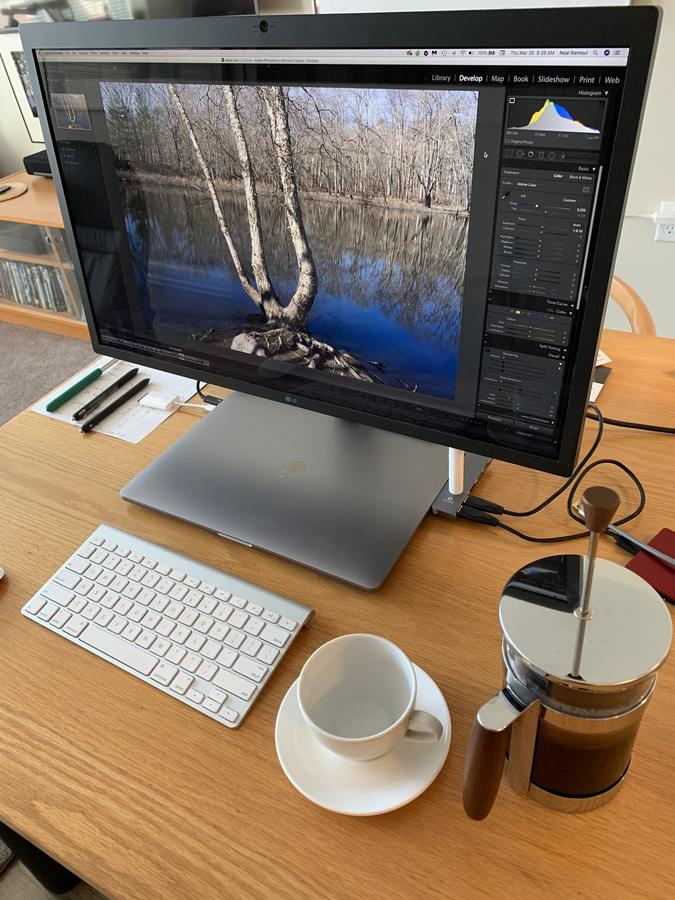
Here I am ready to go to work, a fresh pot of coffee to my right files up and running in Lightroom. I'd been photographing lately, before we got shut down, along the confluence of the Assabet and Sudbury Rivers as they become the Concord River. Because it is close and easily accessed I have probably photographed it a dozen times or so. I even made a poster of it: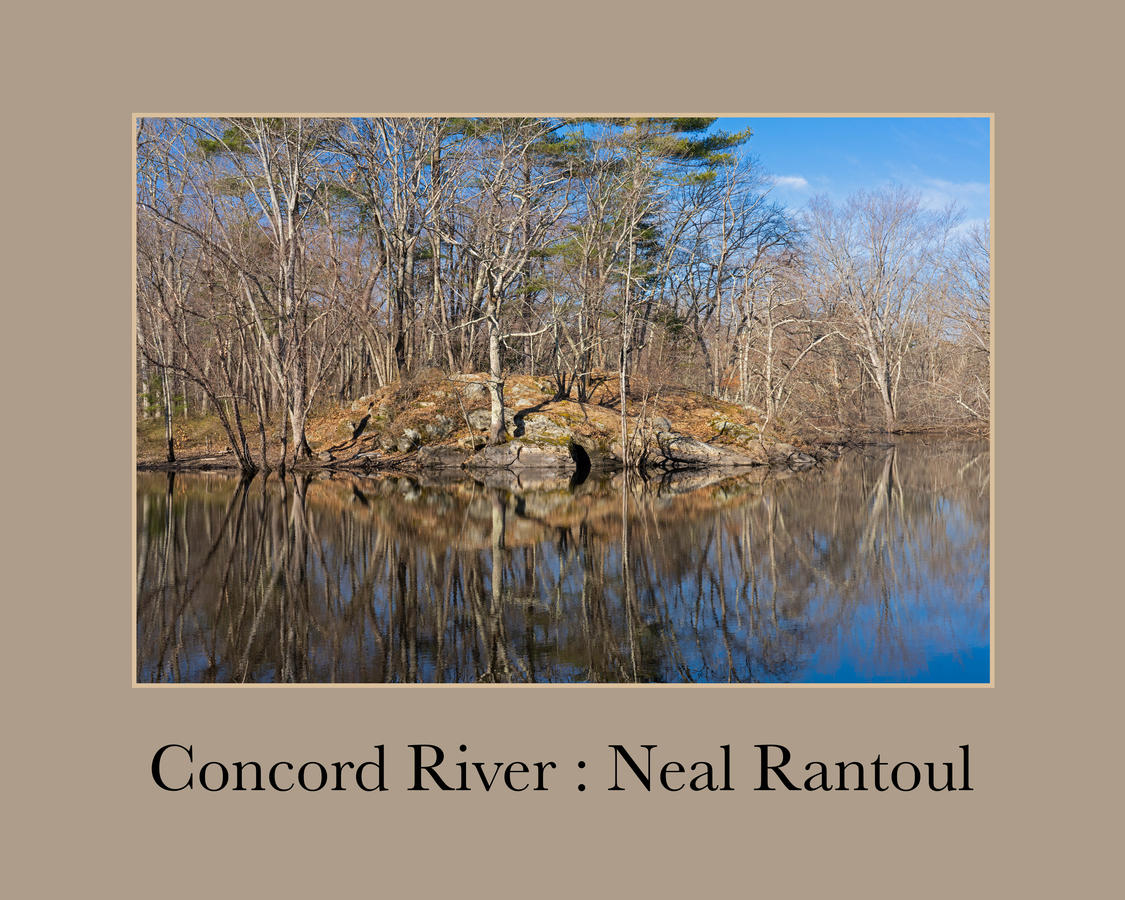
This way of working, going to a place, again and again, is a holdover of my 8 x 10 days. This is a slow, contemplative, disciplined system, seeking the best light and the ideal conditions in which to make a picture. I don't know how you work but I do not print in the small apartment where I live. That is reserved for the studio a few miles away. But because I have this laptop and good monitor (and it is calibrated) I can work the files here, transfer them to a hard drive and take them to the studio to print them there.
The editing part has turned out to work well for I am no longer going to the studio as it seems risky. Go through your back files and I am sure you'll find tons of things to work on.
For instance, before all hell broke loose with Covid-19, my assistant Jillian was tasked with scanning 8 x 10 negatives. What a job! 25 years of large format negatives that are dusty with some that are scratched and with uneven agitation,
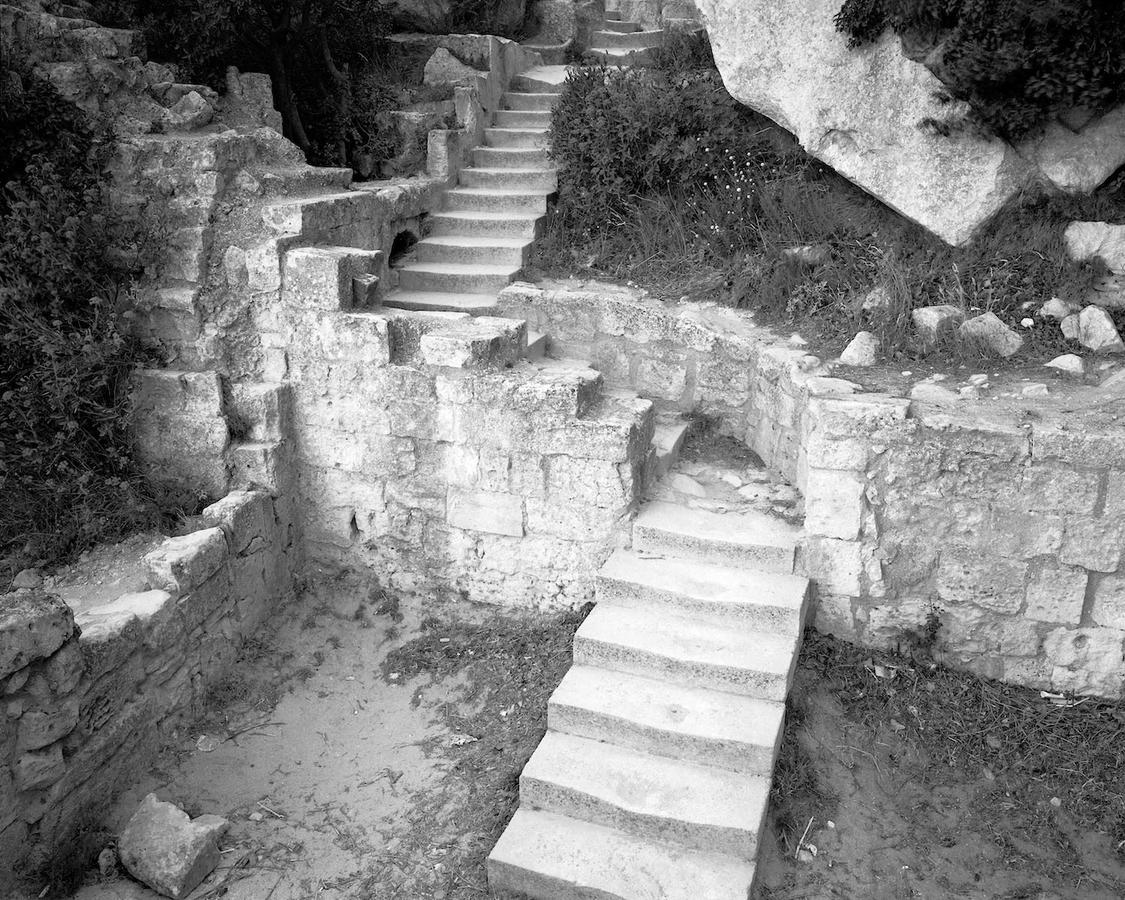 to scan, to clean with the cloning tool in PS and make ready for printing. Although Jillian does many other things for me and is most valued for all that she does, this is her primary role.
to scan, to clean with the cloning tool in PS and make ready for printing. Although Jillian does many other things for me and is most valued for all that she does, this is her primary role.
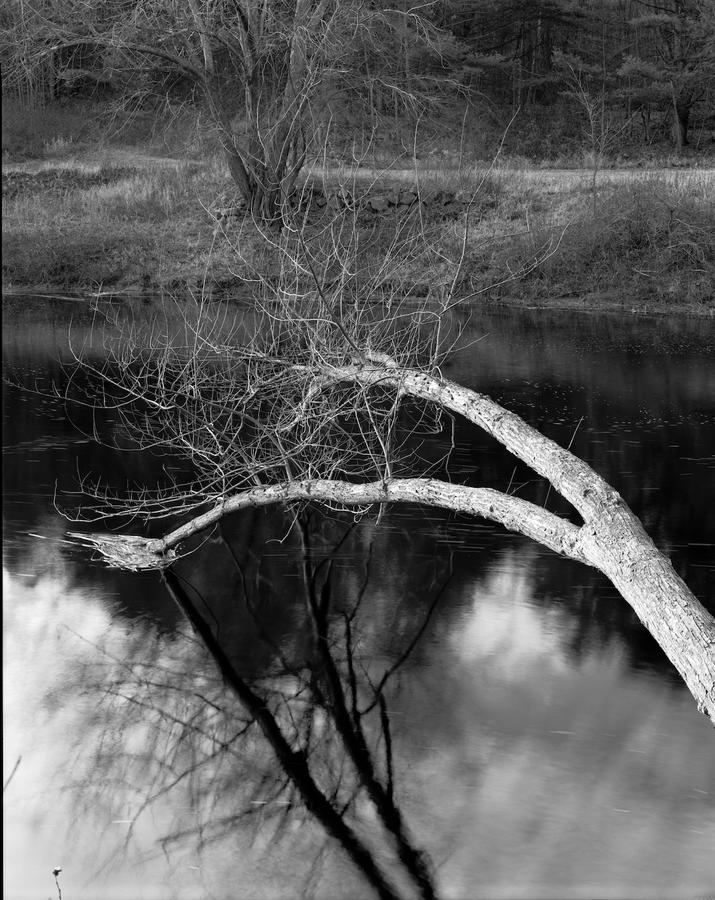
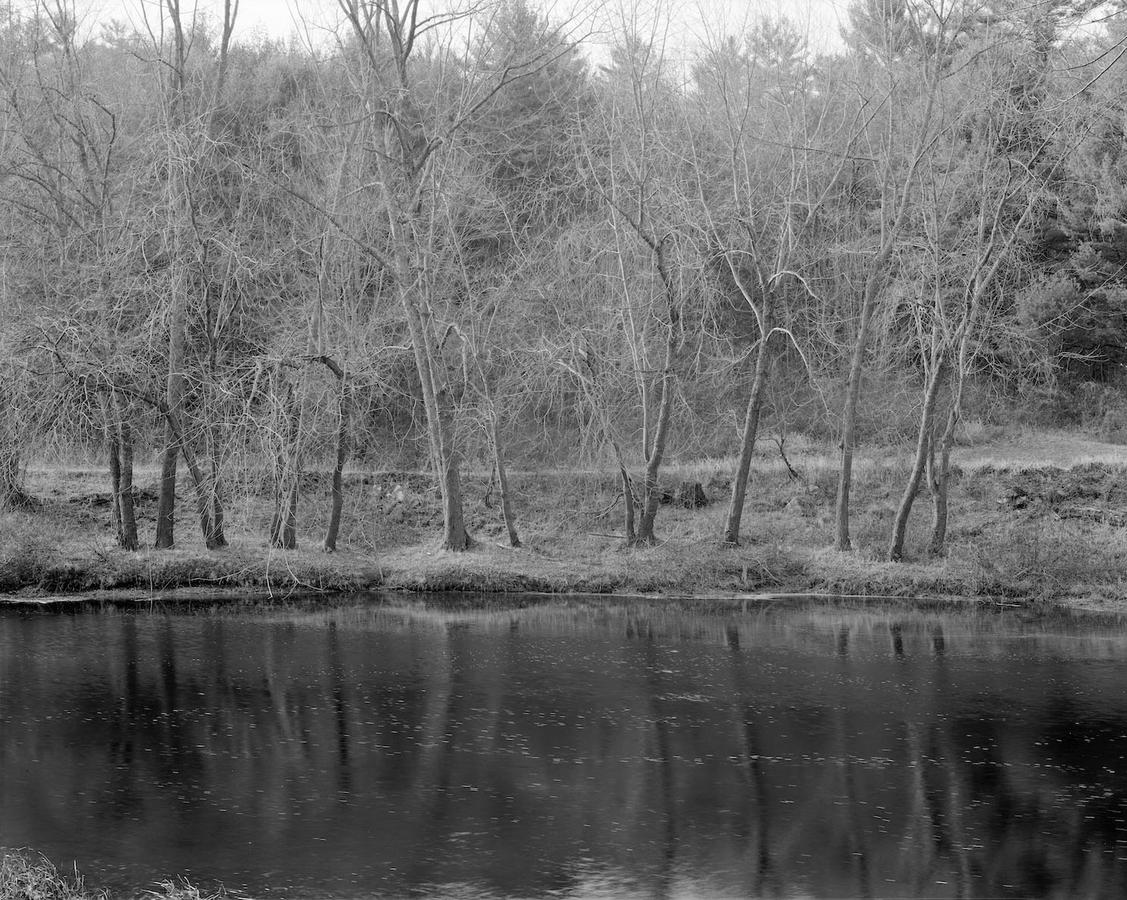
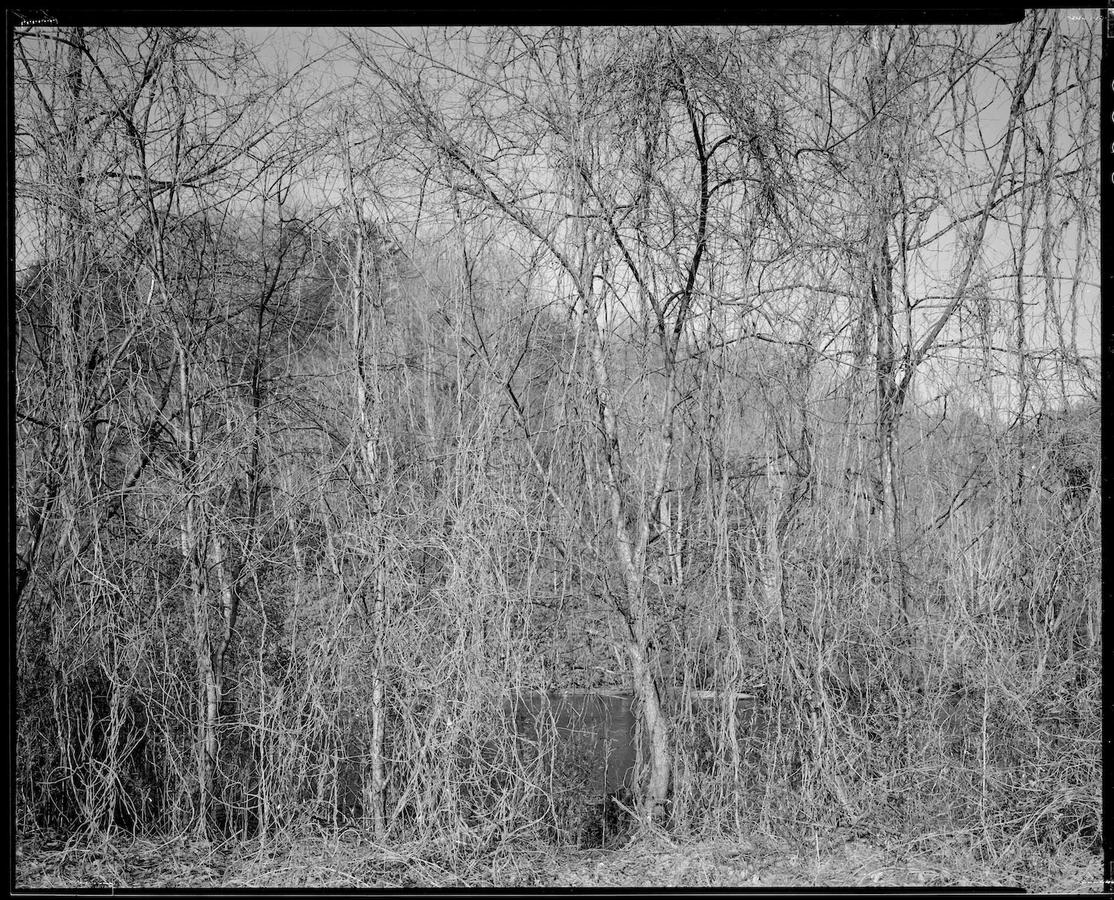
I suspect some of you may be in the same predicament. The reality is if much of this work is not scanned and made ready to print... and then printed, it will not see the light of day, ever. I know that effort in doesn't result in great art as a result but nevertheless, 25 years' worth of work thrown in a dumpster after I am gone is a sobering thought.
So, we are slowly making some of this work, a highly selected group, yes, into portfolios of prints. These we will add to the many sets of photographs I darkroom printed at the time to form a survey of the 8 x 10 years, about 1980 to 2005.
• • •
Don't hesitate to communicate, to reach out with questions and your thoughts. Also, the back catalog of my posts for the past many years are all searchable and available on this page. In this time when we are so blocked off from each other, it is important to keep our lines open. I can be reached: here.
Once again, I wish you all well in this odd, alarming and disastrous time. Stay as safe as you can, we will get through this. I am sure.
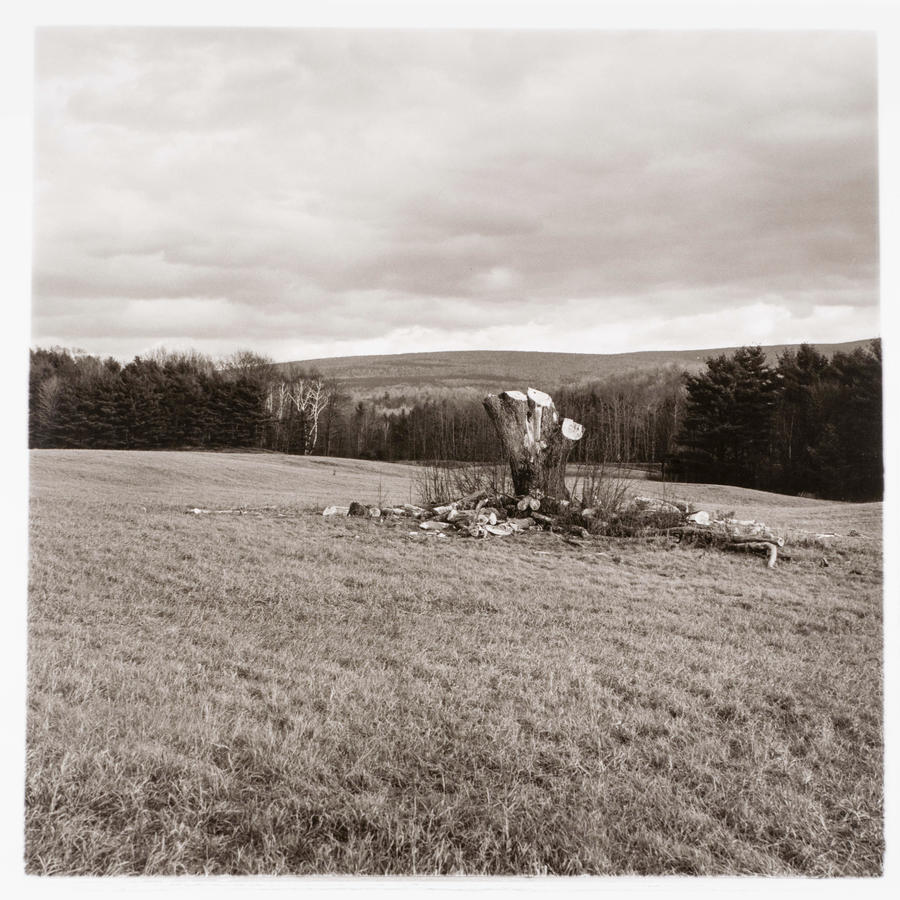
There was a tree on a one-day shooting trip to southern Vermont in the early spring in 1977. All by itself, chopped down, many of its branches and pieces on the ground scattered around it.
Since many of you are photographers you might like to know these were made with the single lens Rollei SL66, hand held, shot on Kodak's Plus-X film, processed in D76 1:1 and printed on Agfa's Portriga Rapid paper in 11 x 14 inches, hence the slightly warm color of the prints. You are seeing copies of the prints, not scans from the negatives.
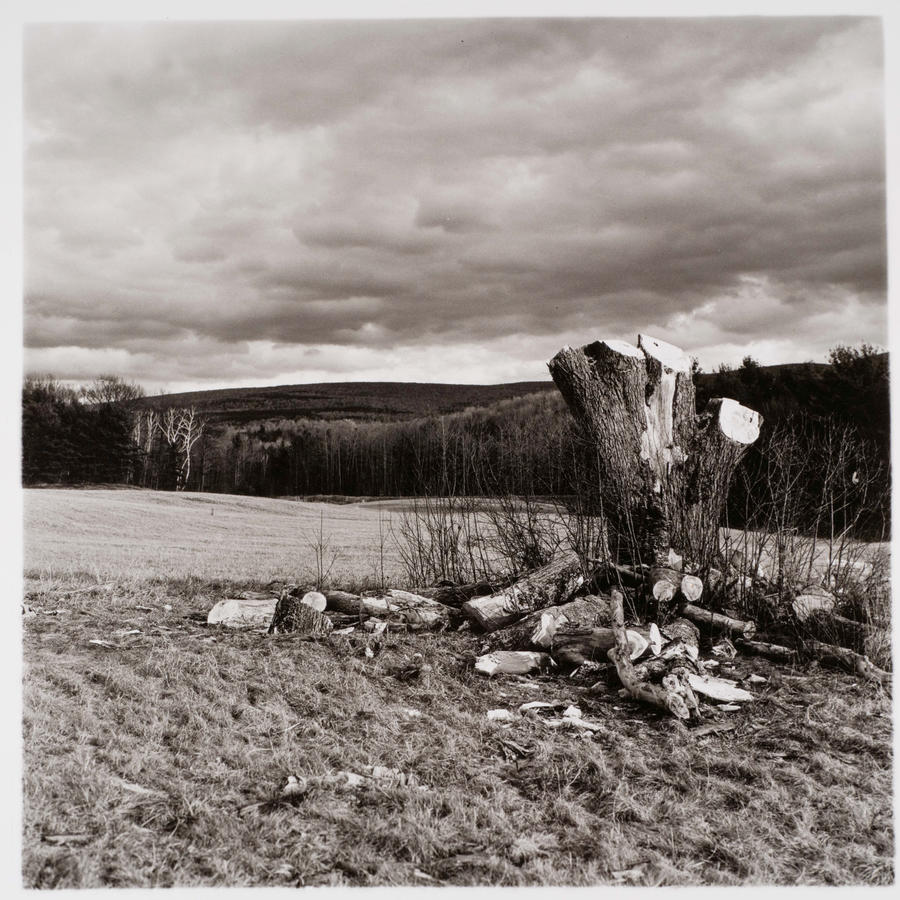
Context? Sure. I was teaching at New England School of Photography (NESOP) which, ironically, is about to close for good next month. I was single as my wife and I had divorced the year before. I was living in Cambridge, MA. I had finished graduate school a few years earlier and my career hadn't really begun in any meaningful way. That would start the next year as I began teaching at Harvard in 1978.
This was a time where my photographing and printing was incessant. I would have a one man show at the Addison Gallery of American Art in Andover, MA the next year, along with smaller shows at NESOP and at local galleries in the Boston area as well as shows at Martha's Vineyard. In fact, coming up the next summer I would have a two person show with my mom in Vineyard Haven. My mother was a painter.
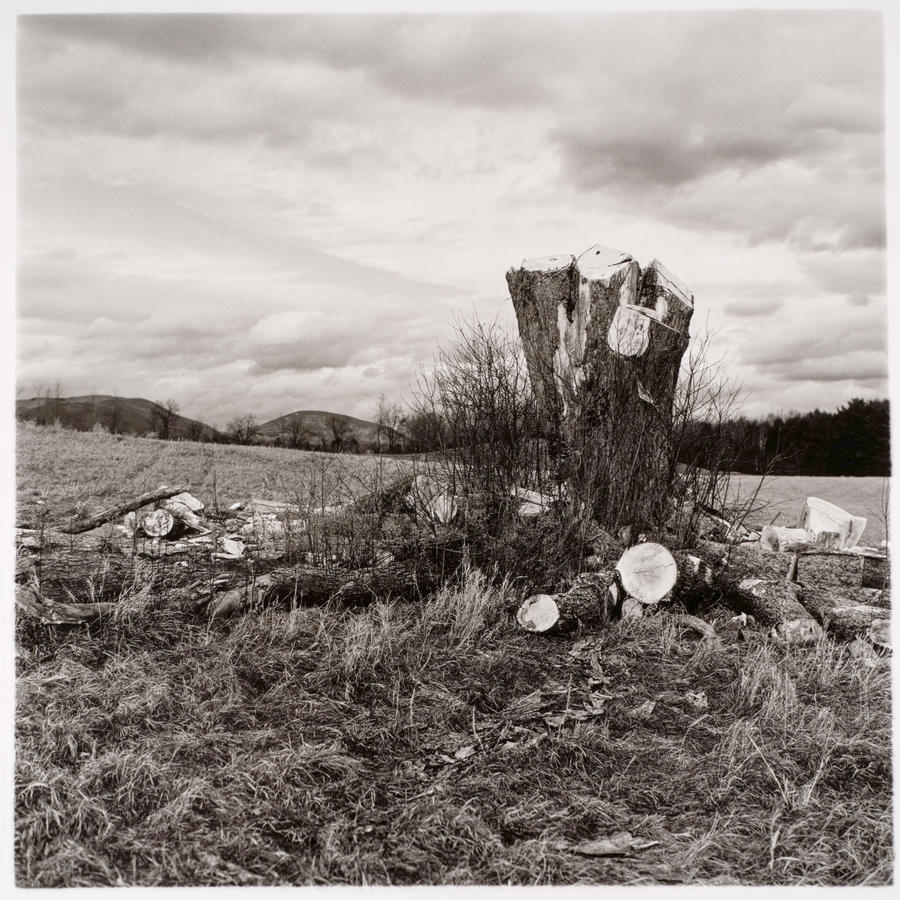
Why show these now? Well, because I came across them in a box of loose prints from the 70's last week. But more importantly, they always held a place close to my heart. They are "series work" before I knew what that was or that series work would form a foundational basis for my photography throughout my career. And they are evidence of a disaster, much like my pictures of Paradise CA are today. As a metaphor for larger tragedies, these photographs of a felled tree all by itself in a large field in Vermont has stood as a symbol for my relationship to the end of life and death for the past 43 years.
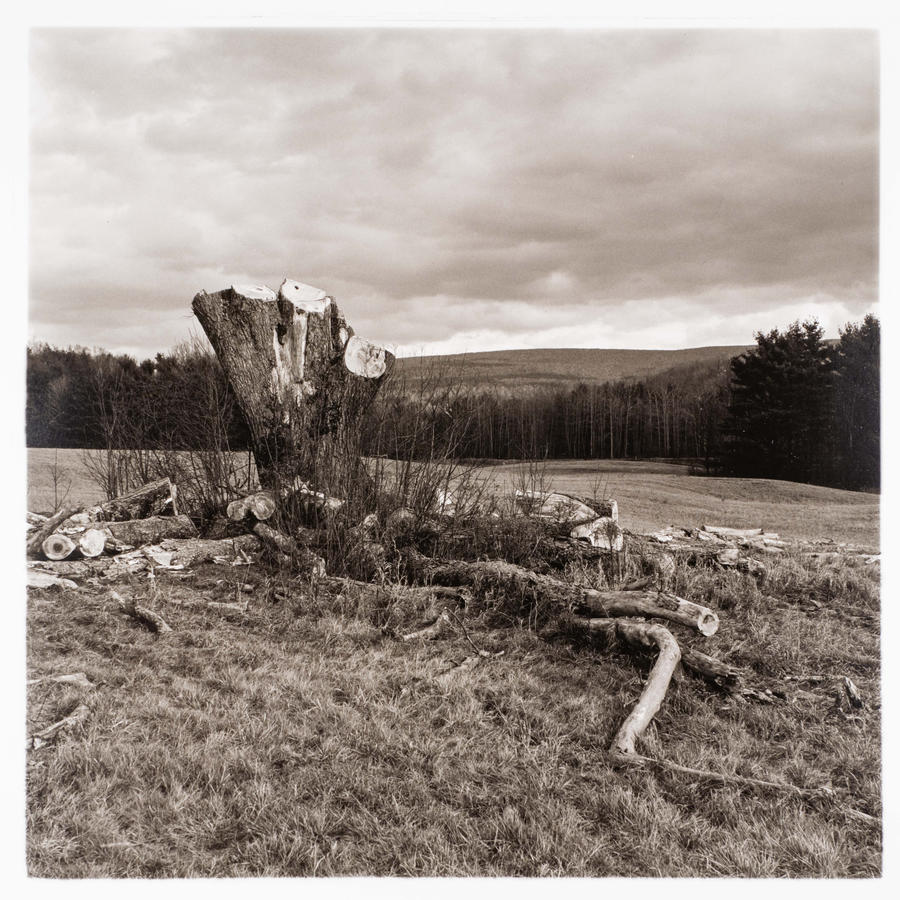
I am showing you the full set, just six prints.
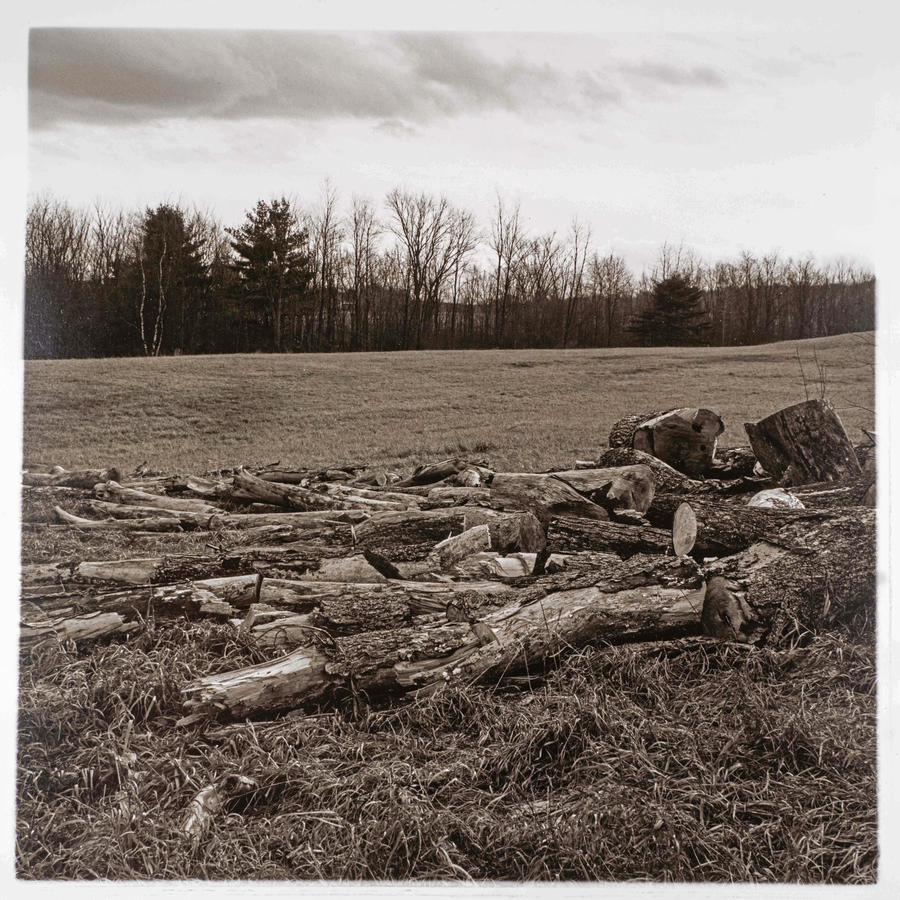
I remember the photographs of the bodies strewn around the battlefield by Mathew Brady or one of his crew during the Civil War. The next summer I would travel to Europe to photograph at Dachau outside of Munich and soon I would make my first intentional series work in Nantucket in the summer of 1980.
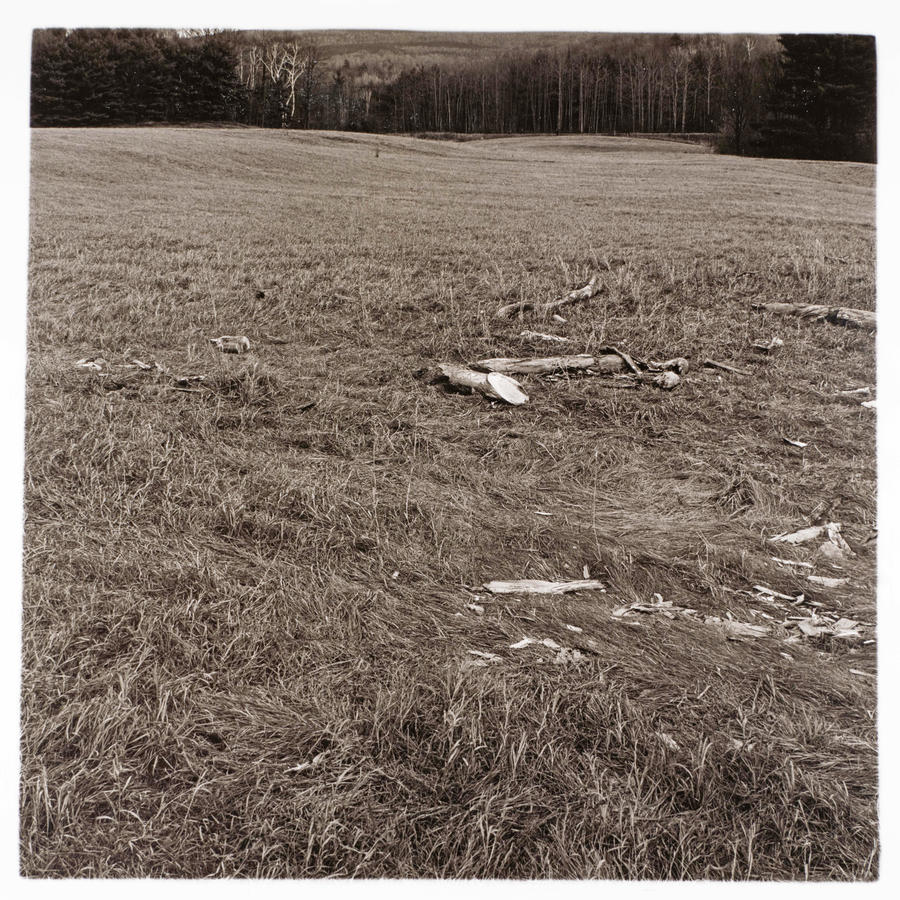
I don't even have a title for this work. It could be "Tree in a Field". Perhaps you have some ideas for what to call this series of mine before I was making series.
If you come Sunday I can show you the prints.
Thank you for reading my blog.
________________________________________________________________Coming up this weekend!
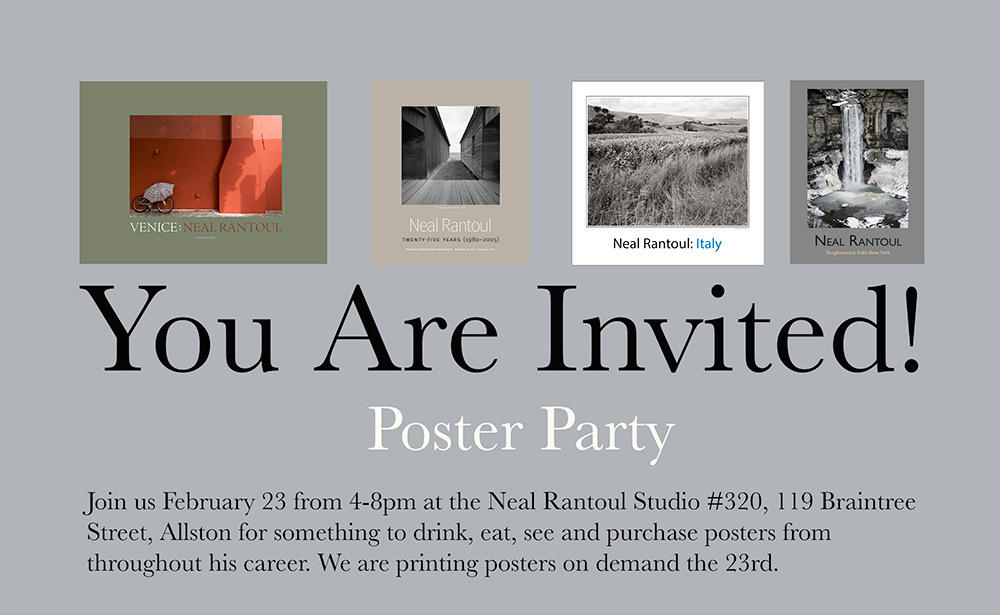
You should come...
Socka what? Sockanosset Boys Training School in Cranston RI. Now long gone and turned into some stores, a restaurant, and offices.
Evidently the school was built in the mid-1800s to house and train boys that were posing some difficulties for the state. Right up the street from a prison.
I would guess I made these about 2005. I have a friend who was living nearby and she mentioned that I might want to take a look at where the school was as the vines and brush were being cleared as prep for developing the site.
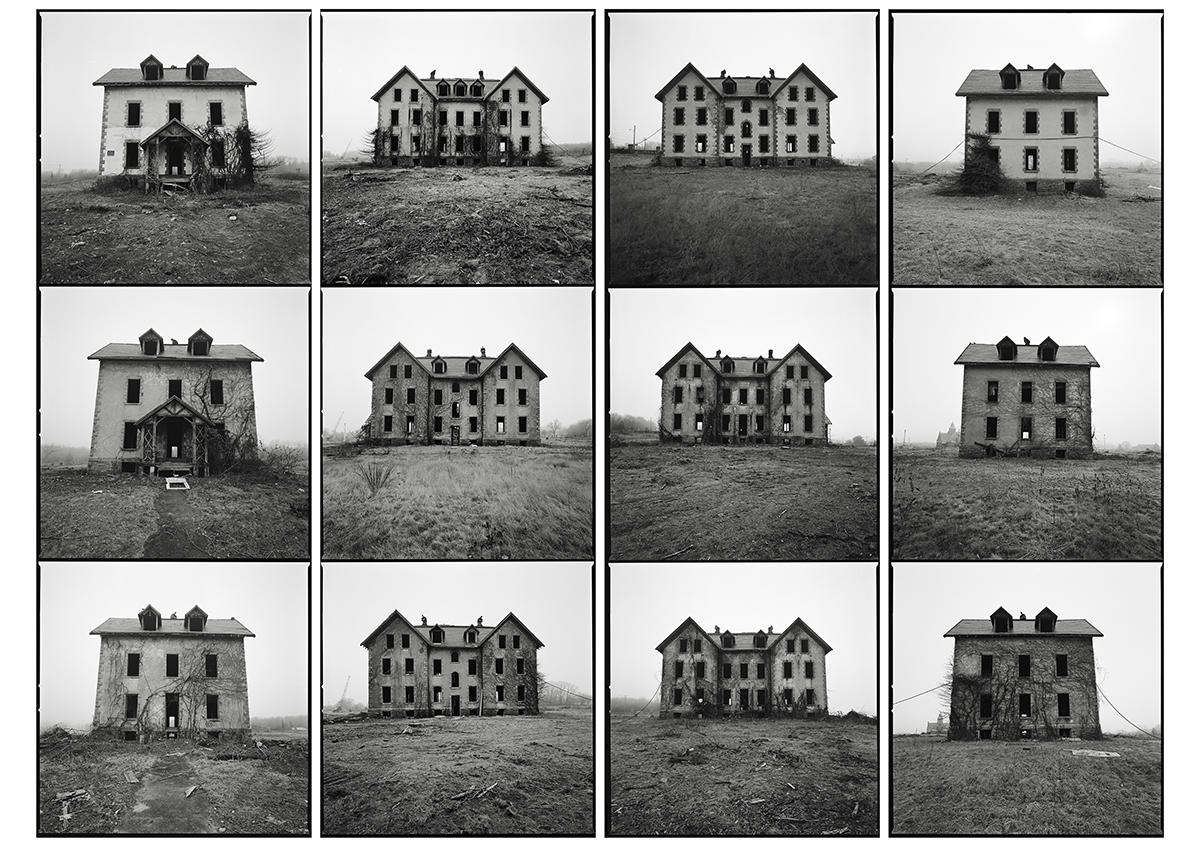
I remember I shot them once and blew it. Work this way and you can't have a frame that is out of focus. I just reprinted it at 45 x 34 inches as earlier ones sold long ago.A note about size: while striking smaller, this image really needs to be large to see the subtleties in the variation of these three buildings. The grid is made from several rolls of 120mm film that I scanned then composited together to look like one roll of twelve exposures.



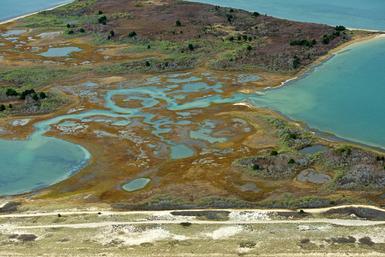
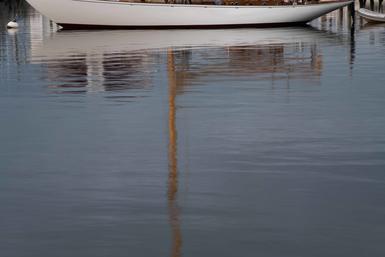
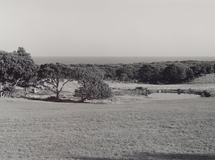
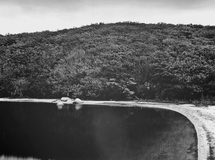
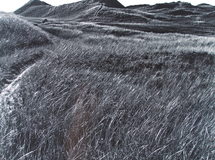




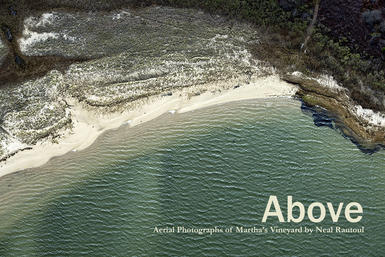


 to scan, to clean with the cloning tool in PS and make ready for printing. Although Jillian does many other things for me and is most valued for all that she does, this is her primary role.
to scan, to clean with the cloning tool in PS and make ready for printing. Although Jillian does many other things for me and is most valued for all that she does, this is her primary role. 


